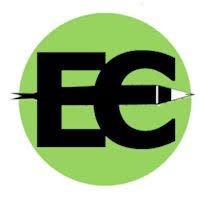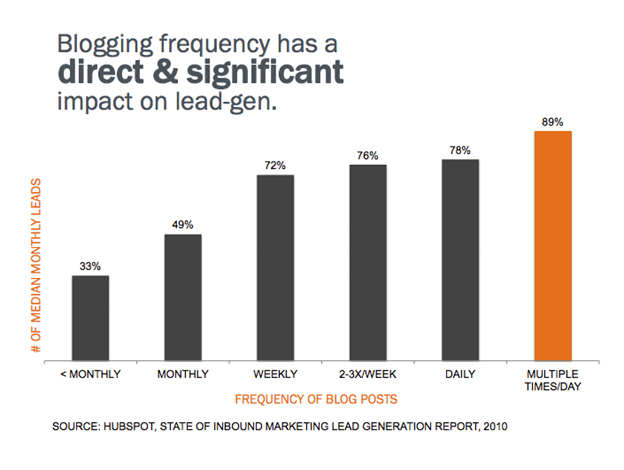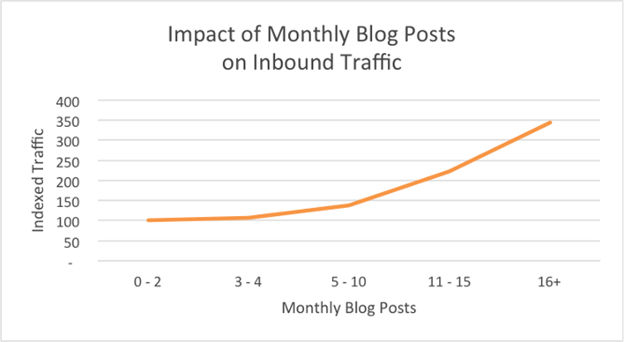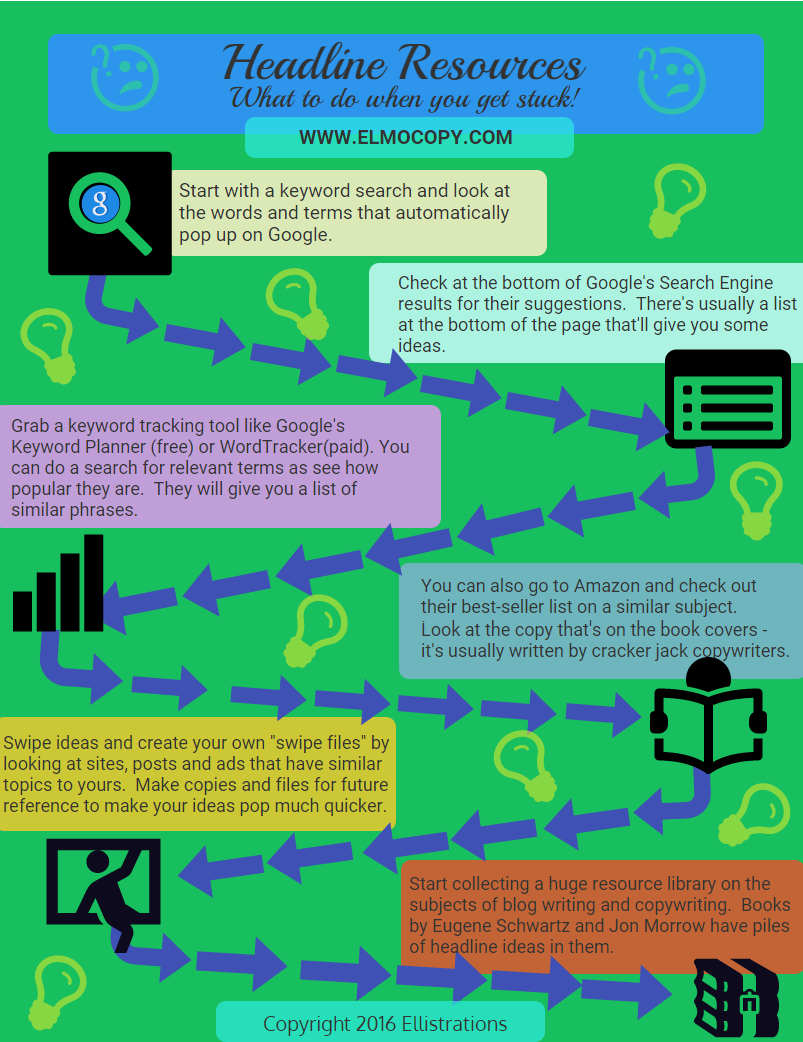This is the first in a series of posts on how to write blog posts that have value to your reader. In this episode, we’ll take a look at the overall structure of the post and then we will learn how to research and write your first headline.
One thing to remember as you begin writing your blog posts, you want to make sure you research and know as much about your audience as possible. That is the first big step. Without a clear picture of who it is you’re writing for, you’re dead in the water.
Here’s the post…Enjoy!
Whenever I talk to other online marketers and business people who are trying to drive traffic to their websites, I usually hear the same question, “How can I drive cheap or free traffic to my site?”
I usually tell them that the answer is probably not the one they really want to hear, which is:
“There’s no such thing.”
That is… if you consider the time you have to put into your traffic generation “free”.
It’s entirely possible to get a steady flow of traffic to your website that is significant without plunking down loads of money, but it does take a lot of time, effort, and commitment. Those three things have a price tag on them whether you think in those terms or not.
As a matter of fact, time is the most valuable commodity we have. You’re only given a certain amount of it, and when it’s gone, it’s gone. Unlike money, relationships, or anything else you value in life, time can never be redeemed.
If you’re going to use blogging as an inbound marketing strategy for gaining a loyal following or online traffic generation to your site, then you’ll have to pay the price.
Either that or you’ll have to hire someone to write for you.
The good news is that this series is going to help save you a ton of time.
The reason why blogging is viewed as a difficult traffic generating strategy is because not only does it take a lot of blood, sweat and tears, but if you do it wrong, it’ll eat a bunch of your time. (Not only that, but you’ll work yourself to death and probably give up.)
However…
If you follow this advice, and diligently and consistently put the time into your blogging, it will produce results.
After studying advertising copy and blogging for several years, I have come to these conclusions about blogging for traffic or dollars:
- Blogging requires consistent, frequent posts
- The blog must have a focused niche that is a big enough to generate a crowd, and is sustainable over the long term
- The posts must be high quality and offer real value to the reader
- The blog must offer solutions to the reader’s problems frequently
- The blog must have relevant, quality graphics that supports the content
- The content must be formatted in a way that helps guide the reader through the material
So, ask yourself the question. Considering all that I’ve just told you, do you think that blogging is worth it?
Let’s take a look some data compiled over the last couple of years.
As you can see from the 2010 chart compiled by Hubspot above, blogging has a direct and significant impact on lead generation. And as we all know, any type of serious lead generation requires heaping- hunks of traffic.
Has this trend changed in the last six years? Let’s take a look at the data compiled in 2015:
- Websites with blogs have 97% more inbound links
- Websites with blogs have 434% more indexed webpages
- Companies that have blogs have 97% more inbound links
- Business to business marketers have 67% more leads
- 65% of U.S. consumers have based a purchase on something they read in a blog post
However, let’s be clear before we move forward. The kind of traffic that you’re going to need to generate to get the results that you want has got to be frequent and consistent. Here’s another graph from Hubspot that backs this traffic generation method from 2015:
Hopefully, you can see the value in consistent and persistent blogging.
If you are going to use this method for generating leads and traffic you’re going to need the following:
- The time to research and write the blog posts yourself
- Staff member(s) that can write and research the material for you
- Freelance writers that you can hire to write the high quality content that you need
- A combination of the above working together to create your traffic generating content
So having said all of this, if you don’t have the time to write or have the money to hire someone to write the high quality content you’ll need to blog with, then you may want to look at alternative methods to get traffic to your site.
The Silver Lining You’ve Been Looking For
Now for the bright spot in all of this. Considering that most people that decide to use this traffic generating method are going to try to take the quick and easy way out by:
- Not researching their niche or market
- Not doing proper research before beginning to write
- Not writing anything of value for their target market
- Not structuring or planning their content in a logical manner
- Not doing SEO and keyword research when preparing their posts
- Not creating relevant graphics for their readers that engage them
- Not using a method to convert blog readers into a list or customer base
- Not using social media sharing links and email messages to keep readers in the loop
(There are more factors to consider, but those are most of the considerations worth mentioning at this point)
When you consider the fact that most people will not do this kind of extensive work, it’s easy to see that if you follow what I’m going to lay out for you, you’ll have a path that few will follow.
And therein lies the seeds to your success in your market space.
If you want a good reason why you should invest your time in writing well-written highly detailed blog posts…
Here’s the reason:
Sometimes those suckers go viral. And when they do… Bazinga! You can almost immediately achieve rock star status at your job, in your chosen vocation or niche market.
Suddenly doors that were closed to you are now open. Speaking engagements, guest blogging, and profitable joint ventures are on the horizon.
Suddenly you’re the authority.
The go-to guy.
The Man.
But before we get too big of a head, we need to understand the basic parts of a blog post and how it all connects together smoothly.
An Overview of a Blog Post
In this section, I’m going to show you exactly what a blog post consists of. Once you see the overall format and structure of how a post is written, you’ll be able to shave time off your writing almost overnight and start churning out well-structured posts with some degree of confidence.
Don’t worry, a little later on I’m going to show you how to do your research as well as write all of the different sections of the post so that you’ll know exactly what to write.
As a writer of advertising copy, I have found that writing blog posts is very similar to writing ad copy. Here are the basic sections of a blog post are laid out:
- The Headline
- Relevant Picture
- Introduction where you’ll describe the problem or the desire the person may be having
- Points you’re going to be giving in this post that’ll solve their problems or fill their desires
- Go through all of the points you’ll need section by section giving detailed instructions on each step
- Your conclusion
- How to share the post info
- Support material
Throughout my posts I sometimes use subheads. Subheads tell readers when a new section of your post is starting and gives them a taste of what the next section is about. You want to make your subheads kind of tantalizing and whet the reader’s appetite for the material in the next section to come.
The Headline – The Dominant Beast of Your Post
The headline is probably the most important part of any post. In advertising copy the headline is seen as so vital that most seasoned copywriters obsess over it. It’s not uncommon to hear that a copywriter will write and rewrite a headline hundreds of times before landing on a good one.
In blogging the headline is just as vital. However, there are a few more restrictions that are placed on bloggers that copywriters don’t have to contend with.
First of all, to make sure your post is prepped for SEO, you don’t want to have as long of a headline in blogging as you would in copywriting.
Just to give you an idea, here’s a headline written for a direct mail piece by the famous marketer Dan Kennedy:
“Announcing An Elegant And Sophisticated Referral System Your Competition Doesn’t Know About That’ll Generate An Endless Flow Of Customers, Clients Or Patients Who Are Predisposed To Do Business With You…Even If You’ve Been Afraid To Ask For Referrals Or Your Customers Don’t Know How.”
Now, here’s a headline by the blogging genius, Jon Morrow:
“How I Wrote Posts That Touched the Hearts of More Than 5 Million People”
As you can see, headlines for printed material can be as long or as short as you want it to be. With blogging the rule of thumb is to keep your title under 65 characters.
And the reason for this is quite simple. A blog will take your title and turn it into a URL for your posting page.
Here is a good example:
If you look closely at Figure 1 above, you’ll see that the title “7 Steps to Claiming Your Niche Market” is the same as what’s in the Web address (URL).
Usually when you post a blog piece, each post will take your title and place it into the URL. However, it will only take around 70 or so characters before it leaves out the rest of your URL. So, you’ll want to keep your characters somewhere around 65 characters.
There are other reasons for doing this as well. If you want your post to be shared on social media sites like twitter, you can only post so many characters.
In Twitter’s case, your tweets can’t exceed 140 characters and many of those characters are URL backslashes and other characters that you’ll be posting along with your message.
Another reason that you don’t want your headline too long is because when people share a title or headline in email, if the title is too long it’ll get cut off in the subject window like so:
Figure 2:
The bottom line is that if your blog post is too long, you won’t be able to use twitter to share it no matter how good it is.
Top Secret Tip: Using Amazon to Create Great Headlines
I was writing some advertising copy for a product that I was promoting on Amazon, and I came across a great way to write headlines and copy in general. I started looking at books that were similar to my product to get ideas for my copy.
Think about that for a second.
Copywriters write the ads and cover copy for the nonfiction self-help, or how-to books that are on sale.
I would venture a guess that the copy that’s written for these bestselling books is probably written by experienced copywriters that have researched and studied the books or products that are being sold.
I would also think that the best copy would appear on the covers of these books and that the copy on the back side of the book (which is probably sales copy) is written and researched by advertising copywriters as well.
So you can get a bunch of great information and ideas from reading these covers and any ads that accompany them.
In the realm of ad copy you would write down or copy these ads and keep them in a file you could keep to look at when you needed to. These files are what are known as “swipe files” and all of the top-drawer copy writers maintain files of this sort.
Now just to be clear, swipe files of this nature can help you get great phrases, see the form of the sales letter or a blog post, or give you an idea of how to write or approach a certain area.
They are NOT for plagiarizing or copying word for word.
If you can’t write your own material, I’d say you need to do something else besides writing.
You really can’t be a great blogger or copywriter if you’re using someone else’s work as a crutch but you sure can draw all sorts of ideas from them.
And you don’t have to draw ideas or inspiration from just one swipe or ad. You can use several at the same time. I recently wrote an advertising piece where I used swipes and ideas from 4 different sources.
I got help on the headline from looking at covers on Amazon. I also found benefits for my copy by reading the comments section of very similar copy. I just looked at all of the things people liked the most about the product and how it helped them and I had all sorts of ideas.
Not only had that, but the people that wrote those comments had some great phrases that I could use in my copy.
I also had to look at advertisements that two great pro copywriters had written to see the format of the overall copy I should follow. (Why not learn from the best in the business?)
Here are the steps to using Amazon to gather ideas:
- Look at non-fiction types of books that have similar topics to what you want to write about
- Look at how the copy is written and write down the parts and short phrases that you can use to make your headline have more impact.
- Read through the comments and see if there are any repeated benefits or ideas that you can use
- Once you get some of the material swiped that you can use, you can then begin crafting your headline using the Benefit + Curiosity = Interest formula
- If you want to really nail a headline, crank out about 25 of them and choose what you think are the best ones.
- See if you can get others to read your copy and give you feedback before you pick your headline
Figure 3:
Using the Warrior Forum to Brainstorm and Test Ideas
Another method I use to help write headlines, is to bounce ideas off of other copywriters. There are a couple of online forums that I hang out on, and one of them is the Warrior Forum (WF).
There’s a whole cadre of copywriters and copywriter wannabes on there and they usually hang out in the copywriting section of the forum.
You can almost always post a headline or some copy there and get a response.
However, these guys and gals will be blunt and most of the time won’t pull any punches. So if you’re wearing soft tissue as an outer skin for your ego, you better toughen up buttercup, or you’ll get shredded.
I’m not saying that they’re mean people; they are some of the nicest people on the planet. But you will get your copy shredded and you will get brutally honest evaluations and ideas about your work.
Which is what you want.
You won’t get any better trying to write copy without someone telling you the honest truth.
So if you do go on the WF, please make sure that you thank them for any help you get. It’s rare in this world when people appreciate what you do for them.\
How to Practice Writing Headlines
I often see all sorts of ideas on how to craft headlines or some other aspect of writing copy or blog posts, but rarely do I see articles that tell you a good way to practice it.
So, I’m going to give you step-by-step instructions on how to practice writing headlines.
If you practice this enough, you’ll have mastered a skill that’ll help generate interest in your posts while moving you on your way to blogging stardom.
The steps to writing a great headline:
Step 1 Research
The best advice I can give you about researching blog posts and headlines is to first know your audience.
If you can figure out how to get feedback from you’re audience about what interests them and what they would like to hear more about, then that’s pure gold.
I you checkout Neil Patel’s QuickSprout site (www.quicksprout.com) you’ll see a small pop-up at the lower left hand side of the screen. This pop up asks you a question about a subject that’s relevant to his site.
It usually asks you questions that help Neil determine what people that come to his site is interested in. If he only gets a few responses, then he knows he’s on a dead topic.
If he gets a lot of answers, then he knows that he can move on to writing about the topic or creating a product that addresses the interest.
But the main thing is to know who are writing for. Go to the blogs and forums that they hang out on and pick their brains.
Find out what kind of language they’re using, what keeps them up at night, what their desires are and anything else you can about them.
Once you know what your target market is all about, writing anything for them will be much easier.
Step 2: Use Research Tools
As I said earlier, if you’re drawing a blank on what to write , you can go on Amazon or another online book vendor and look at books with similar subject matter and see what they had placed on their covers.
This will give you some ideas on what to write for your headlines.
If you look at the bestsellers on Amazon in your subject area, I can almost guarantee that the copy that’s written for the cover has been written by copywriters that can deliver. So, that’s really fertile ground for ideas.
You can also use Google to generate keyword ideas as well. For example, If you were writing a post about “metal detecting for profit”, then you could type that into Google to see what the results are.
You should see the automatic fill that Google uses that looks something like this:
Figure 4:
Also, at the bottom of the first page of the search engine results Google has other suggestions that look like this:
Figure 5:
These suggestions will give you ideas that will help you get started. In the case above I would start a list like this:
- Metal detecting for profit (your original search)
- Metal detecting profitable hobby
- Metal detecting for fun and profit
- Metal detecting finds worth money
- Metal detecting finds
So, if I were to use just the ideas above, I could start writing:
“How To Turn Metal Detecting Into A Profitable Hobby While Having Fun” (less than 60 characters).
Now that’s just a start and it gets your brain thinking about how you can start writing your headline.
See?
Step 3: Use a formula
Here’s the first formula that I learned from my copywriting mentor:
I=B+C
Or
Interest = Benefit +Curiosity
So when you start writing headlines, you need to find the main benefit that your target market is looking for when they read it. As I said before, you need to hit on what keeps them up at night or what their deepest desire or wish is.
Now, if you can create curiosity along with that, they’ll have an interest in what you have to say.
Let me give you an example:
“Amazing New Formula From Beverly Hills Lets You Look Years Younger”
That headline was from the great Gary Halbert and was extremely effective. (If you don’t know who Gary Halbert is, you should really check him out!)
But, let’s look at it for a second.
Curiosity: Amazing New Formula From Beverly Hills
Now if you’re a woman and you want to look great, then yeah, you’ll want to know what the formula is , right?
Benefit: Lets You Look Years Younger
There’s no doubt as to what the benefit is in this product. So, of course there is going to be an Interest!
When you see how simple it looks all laid out like this, you might make the mistake of thinking this is going to be easy. But I can assure you that writing killer headlines is anything but easy.
The Blog Headline Formula
I have used the headline formula above to help me write headlines for advertising copy, as well as blog posts. However, there is an even better way to write them.
I mentioned the master blogger and SEO guy Neil Patel earlier, and he has a formula on his site that goes like this:
Number or Trigger Word + Adjective (describing word) + Keyword + Promise
Here are a few examples Neil’s Headlines:
“7 Ways to Make Your Content More Valuable”
“Get More From Landing Pages: 6 Ways to Use Them More Effectively”
“Mastering Content Marketing: 7 Required Principles for Success”
Before I move on, I’d like to mention that you can get an incredible resource from another blogging great, Jon Morrow. This eBook, which is free by the way, has 52 headline swipes that you can use to write great headlines.
However, I’d like to be clear that you should try to write your own headlines and develop your own voice and style, rather than using someone else’s headlines as a total crutch.
Elmo’s Formula
Over time, you’ll very likely grab several ideas and start your own way of thinking of headlines.
Benefit + Curiosity + Numbers + Excitement + Keywords = Bazinga Headline!
And now it’s time to move on to…
Step 5 Let’s Start Practicing
Once you have your keywords, ideas, swipes and formulas in place, you can start writing. Take those keywords and really push yourself to write at least 25 headlines per post for practice.
As you practice, try to keep these ideas in mind
- Make sure that the main benefit is the centerpiece of your headline
- Try to use numbers in your headline because people respond favorably to them
- You should add the element of curiosity to your headlines
- You want to use words that generate excitement
- If you can, make the reader want to read the article because you have roused his or her curiosity
- Try to be concise on blog post headlines (60 to 70 characters, tops)
Side note: I love to draw. Years ago, I really got into it. I found a great teacher, and she turned me on to a book about the subject. There was one key piece of information in that book that really got my attention.
The author wrote,” I really accelerated my drawing skills when I carried my sketch pad around with me all day. I would wear my pencils down to nothing and I drove my parents nuts because I was even sleeping with my sketch books. If you really want to get good at drawing you better carry your books with you constantly and draw every chance you get.”
It’s the same thing with writing. I’m not suggesting that you sleep with your laptop, the more practice you get at writing blog posts or copywriting, the better off you’ll be.
So using the 4 steps I mentioned above you are going to spend an hour writing out headlines. You will write no less than 25 headlines per post until you get the hang of it.
When you first start writing your headlines, try to focus primarily on how you’re going to on the main benefit of your post. What problem, or desire are you trying to solve or fulfill?
Getting the Engine Started
Here’s a good exercise to get you started.
- Pretend that you’ve got a friend with a problem or desire that needs to be solved
- You just found a great solution to that problem now your’re excited and want to tell her all about it!
- Pretend that you’re sitting across a table from that friend and you are going to tell them as fast as you can about the solution. Try to think about exactly the way you would phrase it to her. (You wouldn’t be talking like a dictionary or a text book, would you?)
- Now type or write it out as fast as you can. Don’t worry about following any rules or anything like that just get it out
- Now, write it again and this time try to be more concise. Keep the excitement, but scale down the words
- Now, you can start to get more critical about what you’re writing. Try to think of how you can arouse her curiosity about your solution so that she’ll actually try it!
- Now start thinking about some of the rules. Make it around 60 to 70 characters, create curiosity, main benefit, etc.
- Now take that headline and rewrite it 25 times,(taking time out to go to the bathroom if you have to. Ha-ha!)
- Once you’ve done this, start looking at all of your headlines that you’ve written. You’ll get used to looking critically at this stuff after awhile and pick the best ones from the batch
- If you need to rewrite those, do so
- Now, get a couple more pairs of eyes on these and see what others think of them
- Pat yourself on the back, because you have successfully written your first blog post headline (walk with swag, act cocky…what ever!)
Ok now it’s up to you. Go out there and start killing it.
Yes, this takes quite a bit of work but once you have a few successes under your belt you’ll really start to feel energized. The reason you’ll feel that way is because you’ll be recognized as a leader and a maven.
Sure you’ll make some money, but you’ll have a blast helping people and encouraging them too.
I hope this session was a blessing to you. Please feel free to contact me if you need any help or you get stuck. Also, it would be totally awesome if you would share my post with someone who needs it.
In my next post, we’re going to look at subheads and how to use those to start outlining your blog posts.
 To your success and happiness!
To your success and happiness!
Mark “Elmo” Ellis
Mark “Elm o” Ellis is a copywriter that specializes in advertising copy in the recreational markets. If you need to hire a copywriter, take a look at his portfolio page or give him a call at: (859) 797-9560 or email him at: elmo033057(at symbol)gmail.com
o” Ellis is a copywriter that specializes in advertising copy in the recreational markets. If you need to hire a copywriter, take a look at his portfolio page or give him a call at: (859) 797-9560 or email him at: elmo033057(at symbol)gmail.com









